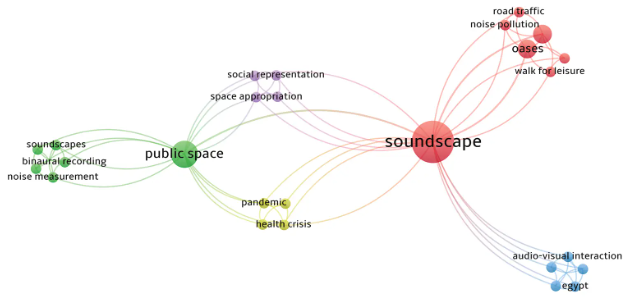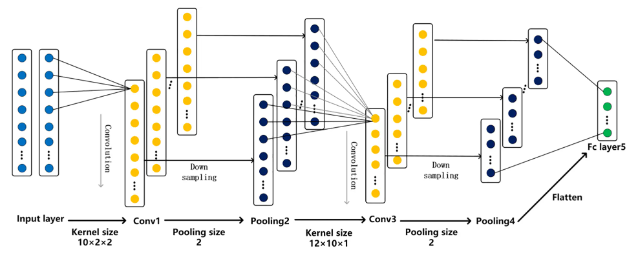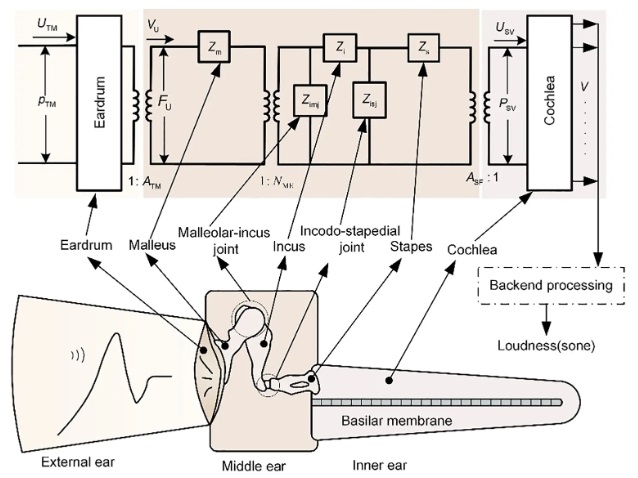Human-AI integration and sound-vibration technology-driven enterprise digital transformation: The mediating role of technological innovation
Abstract
The synergistic application of human-AI integration and sound-vibration technology is profoundly reshaping the digital transformation landscape and technological innovation in Chinese enterprises. In this research, with technological innovation as the mediating variable, how human-AI integration and sound-vibration technology jointly optimize enterprise digital transformation was investigated. A human-AI collaborative model incorporating sound-vibration technology is constructed and validated using confirmatory factor analysis (CFA) and partial least squares structural equation modeling (PLS-SEM), revealing its dual role in accelerating digital transformation and driving technological innovation. Data from the power sector of Chinese technology enterprises is analyzed, with 262 observations collected via a structured questionnaire and examined using structural equation modeling. The findings demonstrate that human-AI integration significantly enhances organizational capabilities through complex data processing, sound-vibration signal analysis, and decision optimization, while the application of sound-vibration technology further improves the efficiency of equipment monitoring and predictive maintenance, thereby supporting digital transformation. Technological innovation plays a critical mediating role, with its contributions to operational efficiency and emerging business models empirically validated. The research not only enriches the theoretical framework of human-AI integration and sound-vibration technology in digital transformation but also provides actionable strategic recommendations for enterprises and decision-makers to achieve continuous innovation and competitive advantages in the era of intelligent and digital transformation.
References
[1]Kitsios F, Kamariotou M. Artificial intelligence and business strategy towards digital transformation: A research agenda. Sustainability. 2021; 13(4): 2025. doi: 10.3390/s13042025
[2]Reier Forradellas RF, Garay Gallastegui LM. Digital Transformation and Artificial Intelligence Applied to Business: Legal Regulations, Economic Impact and Perspective. Laws. 2021; 10(3): 70. doi: 10.3390/laws10030070
[3]Ahn MJ, Chen YC. Digital transformation toward AI-augmented public administration: The perception of government employees and the willingness to use AI in government. Government Information Quarterly. 2022; 39(2): 101664. doi: 10.1016/j.giq.2021.101664
[4]Arslan A, Cooper C, Khan Z, et al. Artificial intelligence and human workers interaction at team level: A conceptual assessment of the challenges and potential HRM strategies. International Journal of Manpower. 2022; 43(1): 75–88. doi: 10.1108/IJM-05-2020-0233
[5]Baharum H, Ismail A, Awang Z, et al. Validating an Instrument for Measuring Newly Graduated Nurses’ Adaptation. International Journal of Environmental Research and Public Health. 2023; 20(4): 2860. doi: 10.3390/ijerph20042860
[6]Bharadwaj A, Sawy OAE, Pavlou PA, et al. Digital business strategy: Toward a next generation of insights. MIS Quarterly. 2013; 37(2): 471–482. doi: 10.25300/MISQ/2013/37:2.3
[7]Bouschery SG, Blazevic V, Piller FT. Augmenting human innovation teams with artificial intelligence: Exploring transformer-based language models. Journal of Product Innovation Management. 2023; 40(2): 139–153. doi: 10.1111/jpim.12732
[8]Matt C, Hess T, Benlian A. Digital Transformation Strategies. Business & Information Systems Engineering. 2015; 57(5): 339–343. doi: 10.1007/s12599-015-0401-5
[9]Brown TA, Moore MT. Confirmatory Factor Analysis (CFA). In: Hoyle RH (editor). Handbook of Structural Equation Modeling. The Guilford Press; 2012. pp. 361–379.
[10]Cui J, Yan C, Hong ANH. Tencent’s Corporate Strategic Organizational Digital Management and Digital Transformation: A Case Study. Journal of Business and Social Sciences. 2022.
[11]Sundar SS. Rise of machine agency: A framework for studying the psychology of human–AI interaction (HAII). Journal of Computer-Mediated Communication. 2020; 25(1): 74–88. doi:10.1093/jcmc/zmz024
[12]Liu H, Cui J. Framework for evaluating technological innovation, CSR and ESG performance in Chinese art industrial: A quantitative analysis. Journal of Infrastructure, Policy and Development. 2024; 8(8): 6366. doi: 10.24294/jipd.v8i8.6366
[13]Rogers EM. Diffusion of innovations, 5th ed. Free Press; 2003.
[14]Teece DJ. Explicating dynamic capabilities: the nature and microfoundations of (sustainable) enterprise performance. Strategic Management Journal. 2007; 28(13): 1319–1350. doi: 10.1002/smj.640
[15]Leso BH, Cortimiglia MN, Ghezzi A, et al. Exploring digital transformation capability via a blended perspective of dynamic capabilities and digital maturity: A pattern matching approach. Review of Managerial Science. 2024; 18(4): 1149–1187. doi: 10.1007/s11846-023-00599-1
[16]Damanpour F, Gopalakrishnan S. The Dynamics of the Adoption of Product and Process Innovations in Organizations. Journal of Management Studies. 2001; 38(1): 45–65. doi: 10.1111/1467-6486.00227
[17]Warner KSR, Wäger M. Building dynamic capabilities for digital transformation: An ongoing process of strategic renewal. Long Range Planning. 2019; 52(3): 326–349. doi: 10.1016/j.lrp.2018.12.001
[18]Sachan S, Almaghrabi F, Yang JB, et al. Human-AI collaboration to mitigate decision noise in financial underwriting: A study on FinTech innovation in a lending firm. International Review of Financial Analysis. 2024; 93: 103149. doi: 10.1016/j.irfa.2023.103149
[19]Molenaar I. Towards hybrid human–AI learning technologies. European Journal of Education. 2022; 57(4): 632–645. doi: 10.1111/ejed.12535
[20]Hurley RF, Hult GTM. Innovation, Market Orientation, and Organizational Learning: An Integration and Empirical Examination. Journal of Marketing. 1998; 62(3): 42–54. doi: 10.1177/002224299806200303
[21]Davenport TH, Kirby J. Only humans need apply: Winners and losers in the age of smart machines. Harper Business; 2016.
[22]Dergaa I, Chamari K, Zmijewski P, et al. From human writing to artificial intelligence generated text: Examining the prospects and potential threats of ChatGPT in academic writing. Biology of Sport. 2023; 40(2): 615. doi: 10.5114/biolsport.2023.112893
[23]Hess T, Matt C, Benlian A, et al. Options for formulating a digital transformation strategy. MIS Quarterly Executive. 2016; 15(2): 123–139. doi: 10.7892/boris.93450
[24]Hilbert M. Digital technology and social change: the digital transformation of society from a historical perspective. Dialogues in Clinical Neuroscience. 2020; 22(2): 189–194. doi: 10.31887/dcns.2020.22.2/mhilbert
[25]Holzinger A, Saranti A, Angerschmid A, et al. Digital Transformation in Smart Farm and Forest Operations Needs Human-Centered AI: Challenges and Future Directions. Sensors. 2022; 22(8): 3043. doi: 10.3390/s22083043
[26]Haefner N, Wincent J, Parida V, et al. Artificial intelligence and innovation management: A review, framework, and research agenda✰. Technological Forecasting and Social Change. 2021; 162: 120392. doi: 10.1016/j.techfore.2020.120392
[27]Hair JF, Howard MC, Nitzl C. Assessing measurement model quality in PLS-SEM using confirmatory composite analysis. Journal of Business Research. 2020; 109: 101–110. doi: 10.1016/j.jbusres.2019.11.069
[28]Henseler J, Hubona G, Ray PA. Using PLS path modeling in new technology research: updated guidelines. Industrial Management & Data Systems. 2016; 116(1): 2–20. doi: 10.1108/imds-09-2015-0382
[29]Huang MH, Rust RT. Artificial Intelligence in Service. Journal of Service Research. 2018; 21(2): 155–172. doi: 10.1177/1094670517752459
[30]Xu W, Dainoff MJ, Ge L, et al. Transitioning to human interaction with AI systems: New challenges and opportunities for HCI professionals to enable human-centered AI. International Journal of Human–Computer Interaction. 2023; 39(3): 494–518. doi: 10.1080/10447318.2022.2145937
[31]Jarrahi MH. Artificial intelligence and the future of work: Human-AI symbiosis in organizational decision making. Business Horizons. 2018; 61(4): 577–586. doi: 10.1016/j.bushor.2018.03.007
[32]Kaplan A, Haenlein M. Siri, Siri, in my hand: Who’s the fairest in the land? On the interpretations, illustrations, and implications of artificial intelligence. Business Horizons. 2019; 62(1): 15–25. doi: 10.1016/j.bushor.2018.08.004
[33]Ray PP. ChatGPT: A comprehensive review on background, applications, key challenges, bias, ethics, limitations, and future scope. Internet of Things and Cyber-Physical Systems. 2023; 3: 121–154. doi: 10.1016/j.iotcps.2023.100096
[34]Zahra SA, George G. Absorptive Capacity: A Review, Reconceptualization, and Extension. The Academy of Management Review. 2002; 27(2): 185. doi: 10.2307/4134351
[35]Song M, Xing X, Duan Y, et al. Will artificial intelligence replace human customer service? The impact of communication quality and privacy risks on adoption intention. Journal of Retailing and Consumer Services. 2022; 66: 102900. doi: 10.1016/j.jretconser.2022.102900
[36]Subramanian A, Nilakanta S. Organizational innovativeness: Exploring the relationship between organizational determinants of innovation, types of innovations, and measures of organizational performance. Omega. 1996; 24(6): 631–647. doi: 10.1016/S0305-0483(96)00031-X
[37]Shrestha YR, Ben-Menahem SM, von Krogh G. Organizational Decision-Making Structures in the Age of Artificial Intelligence. California Management Review. 2019; 61(4): 66–83. doi: 10.1177/0008125619862257
[38]Vial G. Understanding digital transformation: A review and a research agenda. The Journal of Strategic Information Systems. 2019; 28(2): 118–144. doi: 10.1016/j.jsis.2019.01.003
[39]Weber-Lewerenz B. Corporate digital responsibility (CDR) in construction engineering—Ethical guidelines for the application of digital transformation and artificial intelligence (AI) in user practice. SN Applied Sciences. 2021; 3: 1–25. doi: 10.1007/s42452-021-04532-2
Copyright (c) 2025 Author(s)

This work is licensed under a Creative Commons Attribution 4.0 International License.









